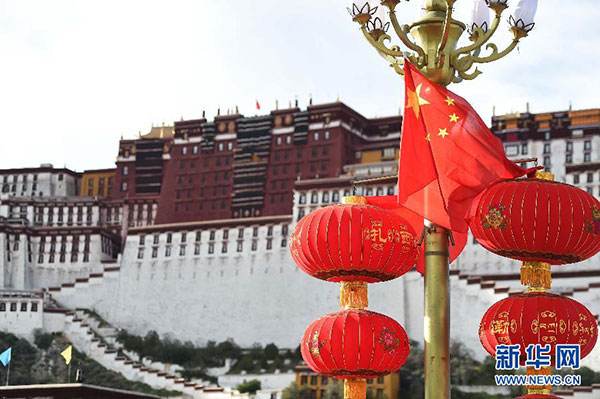Successful regional ethnic autonomy in Tibet
(China Daily) Updated: 2015-09-07 08:17
 |
|
National flags and lanterns are seen on the Potala Palace Square in Lhasa, capital of Southwest China's Tibet autonomous region, Sept 5, 2015. China will hold celebrations for the 50th anniversary of the founding of Tibet Autonomous Region. [Photo/Xinhua] |
The Information Office of the State Council, or China's Cabinet, on Sunday issued a white paper on Successful Practice of Regional Ethnic Autonomy in Tibet. Following is the full text:
Successful Practice of Regional Ethnic Autonomy in Tibet
The State Council Information Office of the People's Republic of China
September 2015, Beijing
Contents
Preface
I. Old Tibet: Dark and Backward
II. Embarking on the Road to Development and Progress
III. The Political System Suited to China's Actual Conditions
IV. The People as Masters of the Country
V. Improving People's Welfare
VI. Protecting and Carrying Forward the Excellent Traditional Culture
VII. Respecting and Protecting Freedom of Religious Belief
VIII. Promoting Ecological Progress Conclusion

I’ve lived in China for quite a considerable time including my graduate school years, travelled and worked in a few cities and still choose my destination taking into consideration the density of smog or PM2.5 particulate matter in the region.











